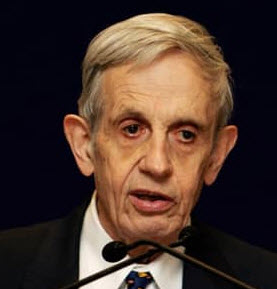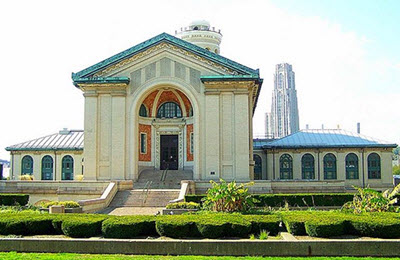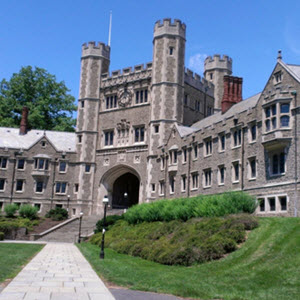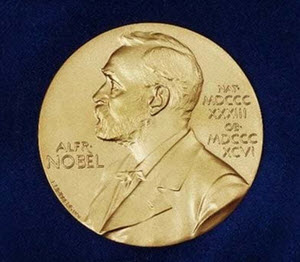Childhood and early education
 John Forbes Nash Jr. was born on 13 June, 1928, in Bluefield (37°15′44″N 81°13′7″W), West Virginia. He was baptised in the Episcopal Church.
John Forbes Nash Jr. was born on 13 June, 1928, in Bluefield (37°15′44″N 81°13′7″W), West Virginia. He was baptised in the Episcopal Church.
Bluefield is located at in the Appalachian Mountains of West Virginia – across the state border from Bluefield, Virginia – and John Forbes Nash Sr. worked as an electrical engineer for the Appalachian Electric Power Company. His wife, Margaret Virginia (née Martin), had been a schoolteacher before she married.
On 16 November, 1930, a daughter was born to the family and named Martha.
Heavily dependant on coal mining, the Great Depression hit Bluefields particularly hard, and coal production here wasn’t revived until the outbreak of World War II. During the depression era, the government of Bluefields nearly went bankrupt, and a series of devastating fires destroyed large parts of the downtown area.
Schooling
John Nash Jr. attended kindergarten and public school, and his parents and grandparents also made sure he was provided with books from which he could learn in his spare time.
During his final year of high school, his parents arranged for him to take advanced mathematical courses at a local community college.
Bachelor and Master studies at the Carnegie Institute of Technology
 Nash earned a full benefit George Westinghouse Scholarship that allowed him to attend Carnegie Institute of Technology in Pittsburgh, Pennsylvania. (This institute eventually became the Carnegie Mellon University.)
Nash earned a full benefit George Westinghouse Scholarship that allowed him to attend Carnegie Institute of Technology in Pittsburgh, Pennsylvania. (This institute eventually became the Carnegie Mellon University.)
At first, he majored in chemical engineering, before changing to a chemistry major. One of his teachers, the renowned Irish mathematician and physicist John Linghton Synge, noticed Nash’s exceptional talent for mathematics and convinced him to switch major again; this time to mathematics.
In 1948, the 19-year-old Nash graduated with both a B.S and M.S. in mathematics.
His former professor Richard James Duffin wrote him a letter of recommendation where he outright called him “a mathematical genius”.
Graduate studies at Princeton
Accepted to graduate school at both Princeton University and Harvard University, Nash picked Princeton after Solomon Lefschetz, chairman of the mathematics department at Princeton, had convinced him that Princeton valued him more, and offered him the John S. Kennedy fellowship. Nash also preferred Princeton’s location; going to Harvard would have meant being even farther away from his family in West Virginia.
Nash accepted the offer from Princeton and moved there to pursue his graduate studies in mathematics. At was during his time in graduate school that he developed the game theory solution concept that we today know as the Nash equilibrium.
Ph.D degree
In 1950, Nash earned his Ph. D. degree with a 28-page dissertation on non-cooperative games. It is on this dissertation that we find the definition and properties of the Nash equilibrium.
Nash’s supervisor for the dissertation was Canadian mathematician Albert W. Tucker.
- Nash, John Forbes (1950). “Equilibrium Points in N-person Games”. Proceedings of the National Academy of Sciences of the United States of America. 36 (1): 48–49. doi:10.1073/pnas.36.1.48. MR 0031701. PMC 1063129. PMID 16588946.
- Nash, John Forbes (1950). “The Bargaining Problem”. Econometrica. 18 (2): 155–62. doi:10.2307/1907266. JSTOR 1907266. MR 0035977.
- Nash, John Forbes (1951). “Non-cooperative Games”. Annals of Mathematics. 54 (2): 286–95. doi:10.2307/1969529. JSTOR 1969529. MR 0043432.
- Nash, John Forbes (1953). “Two-person Cooperative Games”. Econometrica. 21 (1): 128–40. doi:10.2307/1906951. MR 0053471.
Other notable work in mathematics
In addition to his work with game theory, Nash accomplished groundbreaking work in the field of real algebraic geometry. He did for instance create the Nash embedding theorem, and made notable contributions to the theory of nonlinear parabolic partial differential equations and to singularity theory.
For more information about Nash embedding theorem:
Nash, John Forbes (1952). “Real algebraic manifolds”. Annals of Mathematics. 56 (3): 405–21. doi:10.2307/1969649. JSTOR 1969649. MR 0050928. See “Proc. Internat. Congr. Math”. AMS. 1952: 516–17.
Hilbert’s nineteenth problem
Nash and Italian mathematician Ernio de Giorgi both worked out proofs for Hilbert’s nineteenth problem at almost the same time, but the Italian published first – which was a great disappointment for Nash.
Nash and Giorgi’s proofs are not identical; they each take their own route to reach a solution.
Hilbert’s nineteenth problem is on of 23 problems compiled by German mathematician David Hillbert in 1900. The problems were all unsolved back then, and many of them became very influential for 20th century mathematicians. The nineteenth problem asks whether the solutions of regular problems in the calculus of variations are always analytic.
Cryptography
In 2011, the National Security Agency (NSA) declassified letters written by Nash in the 1950s. The content of these letters show that Nash predicted many concepts of today’s cryptography that are based on computational hardness. Among other things, the letters contain Nash’s suggestions for a new type of encryption-decryption machine.
Mental health
Nash was diagnosed with paranoid schizophrenia in 1959. For more information, please visit the article John Forbes Nash Jr. mental health.
Later career
 Nash later career mostly consisted of work in advanced game theory, such as partial agency problems.
Nash later career mostly consisted of work in advanced game theory, such as partial agency problems.
One field of interest for Nash was the role of money in society, seen from a game theory perspective. He was a critic of lobby groups that promotes quasi-doctrines based on Keynesian economics that advocate manipulative short-term inflation and debt tactics that are known to cause a long-term undermining of currencies.
One of Nash’s suggestions was the creation of a industrial consumption price index system that would serve to create more “ideal money” that people could trust, as opposed to unstable “bad money”.
Speaker
Nash was a sought after guest speaker and he appeared at numerous world-class gatherings, including economics summits.
The Sveriges Riksbank Prize in Economic Sciences in Memory of Alfred Nobel
In 1994, the Sveriges Riksbank Prize in Economic Sciences in Memory of Alfred Nobel, commonly referred to as the Nobel Prize in Economics, was shared by three recipients “for their pioneering analysis of equilibria in the theory of non-cooperative games.”
| Laureate | Country | Alma mater | Institution (most significant tenure/at time of receipt) |
| John Harsanyi | USA | Stanford University | University of California, Berkeley |
| John Nash | USA | Princeton University | Princeton University |
| Reinhard Selten | Germany | Goethe University Frankfurt | University of Bonn |
Background
In the late 1980s, Nash started using email to connect with professional mathematicians. They eventually realized that he was the real John Nash, and a group of mathematicians reached out to the award committee at Sveriges Riksbank (Bank of Sweden) to put Nash forward as a possible candidate for the Nobel Prize in Economics. This group was able to vouch for his mental health and his ability to receive the award for his work in game theory.
Other examples of recognition
- The John von Neumann Theory Prize in 1978, for his discovery of non-cooperative equilibria (Nash equilibria)
- The Leroy P. Steele Prize in 1999, in the category Steele Prize for Seminal Contribution to Research, for his paper “The embedding problem for Riemannian manifolds,” Ann. of Math. (2) 63 (1956) 20-63.
- In 1999, Nash received an honorary degree, Doctor of Science and Technology, from Carnegie Mellon Unversity.
- In 2003, Nash received an honorary degree in economics from the University of Naples Federico II (Università degli Studi di Napoli Federico II) in Italy.
- In 2007, Nash received an honorary doctorate in economics from the University of Antwerp, Belgium.
- In 2011, Nash received an honorary doctorate of science from the City University of Hong Kong.
- In 2012, Nash was elected as a fellow of the American Mathematical Society.
- On 19 May, 2015, Nash and Louis Nirenberg were awarded the 2015 Abel Prize by King Harald V of Norway at a ceremony in Oslo, Norway. The Abel Prize is awarded annually to one or more outstanding mathematicians. Named after the Norwegian mathematician Niels Henrik Abel, it is directly modelled after the Nobel Prizes and come with a large monetary award. At the time of writing, the award is 6 million Norwegian kroner, which is over €630,000 / $725,000.
This article was last updated on: October 23, 2018
Contents
